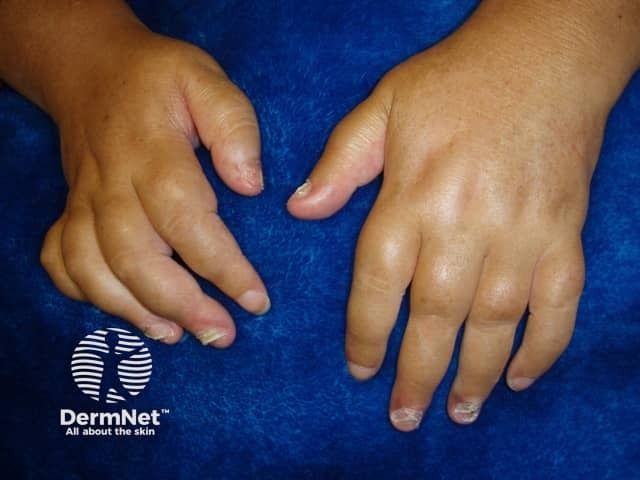- Case-Based Roundtable
- General Dermatology
- Eczema
- Chronic Hand Eczema
- Alopecia
- Aesthetics
- Vitiligo
- COVID-19
- Actinic Keratosis
- Precision Medicine and Biologics
- Rare Disease
- Wound Care
- Rosacea
- Psoriasis
- Psoriatic Arthritis
- Atopic Dermatitis
- Melasma
- NP and PA
- Skin Cancer
- Hidradenitis Suppurativa
- Drug Watch
- Pigmentary Disorders
- Acne
- Pediatric Dermatology
- Practice Management
- Prurigo Nodularis
- Buy-and-Bill
Article
Study shows BoNT-A injections safe, effective long-term
Quickread: The results of a large patient population study with over 4,103 treatment cycles show that patients receiving botulinum toxin-A treatments for the correction of facial wrinkles demonstrate long-lasting effects as well as a high safety profile. Furthermore, as treatments cycles continue the rate of adverse even

Key Points
Berlin - Repeated injections of botulinum neurotoxin type A (BoNT-A) used for the cosmetic correction of wrinkles in the upper face demonstrate a high level of safety as well as effectiveness in the long term, according to the results of a recent study.
Berthold Rzany, M.D., of the department of dermatology and allergy at the Charité University of Medicine in Berlin, Germany, reported on the results of a large-scale, retrospective, cross-sectional patient chart review, and found that repeated injections (a minimum of three to a maximum of five treatment cycles) of BoNT-A in the upper third of the face showed that both patients and physicians rated satisfaction with treatment as high.
"Botulinum toxin type A was shown to be effective and have a good side-effect profile in clinical practice, according to the clinical trial data we studied.
"Also, the doses applied and the satisfaction rates of patients remained stable with three to five treatment cycles, and the adverse event rate was seen to decrease after the first treatment," Dr. Rzany tells Dermatology Times.
Data study
Dr. Rzany analyzed the data from 21 aesthetic medicine centers in Germany and Austria, in which 945 patients (94.3 percent women) underwent a total of 4,103 treatment cycles with BoNT-A for the correction of wrinkles in the upper third of the face. A single treatment cycle was defined as the injection and the associated follow-up information.The median interval between BoNT-A treatment cycles was 5.9 to 6.5 months.
At the time of final assessment, all patients had undergone three treatment cycles, and 75.7 percent and 58.5 percent of patients had undergone four treatment cycles and five treatment cycles, respectively.
In the study population, the majority of patients (81.5 percent) received treatment in more than one area of the face. This included 30.7 percent of patients, who received treatment in the glabella, frontalis and lateral periorbital region; 17.6 percent, treatment in the glabella and frontalis; and 15.6 percent, treatment in the glabella and lateral periorbital areas. Only 14.6 percent of patients received injections in the glabella alone.
Dr. Rzany says the median total BoNT-A dose per treatment cycle in the upper third of the face (frontalis, glabella and lateral periorbital regions) remained constant at 100 units (Dysport units, Ipsen) over the cycles of treatment. The median BoNT-A dose over all treatment cycles in patients who received injections in the glabella was 50 to 60 units. This dosage was comparable to the 50 to 53 units and 50 units given for the frontalis and lateral periorbital regions (both sides), respectively.
Patient satisfaction and physician satisfaction with the effect of treatment ranged from 96 percent to 98.9 percent and 88 percent to 94 percent, respectively, between treatment cycles.
"The data showed that there was no loss of effectiveness over repeated treatment cycles. Interestingly, the satisfaction after five treatment cycles was rated higher by both patients and physicians, compared to the first treatment cycles," Dr. Rzany says.
Most of the adverse events were mild and resolved without any further intervention. Local bruising was the most common adverse event (1.25 percent per treatment cycle) and lid or brow ptosis was uncommon (0.46 percent of treatment cycles) and generally mild.
Dr. Rzany says 90.6 percent of all the patients included in the study did not experience any adverse events over any of the treatment cycles. The total adverse event rate per treatment cycle was 4.1 percent in the first cycle, and this dropped to 2 percent by the fifth treatment cycle.
"One of the reasons why we notice a decrease in the adverse events over time is that you lose the patients who experienced adverse events. Also, the physicians who employ botulinum toxin treatments on their patients have much more experience as well as practice, over time, with injecting techniques, which may also be a likely reason for this decrease in adverse events,"Dr. Rzany says.





